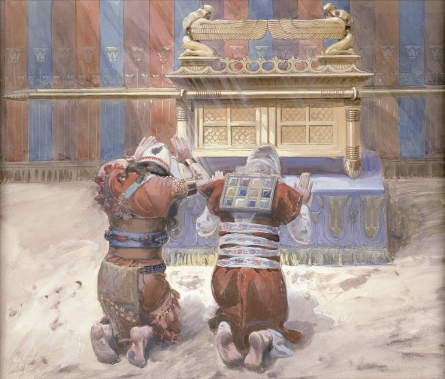In 1832, Orson Hyde received a blessing from the Prophet Joseph Smith promising Orson he would go to Jerusalem to do a great work:
“In due time, thou shalt go to Jerusalem, the land of thy fathers, and be a watchman unto the house of Israel; and by thy hands, shall the Most High do a good work, which shall prepare the way, and greatly facilitate the gathering together of that people.”[2]
Later, in 1839, while living in Nauvoo during the malaria outbreak, Orson reflected on that prophecy:
Orson’s mind began to reflect on the aforementioned mission call in which he would go to Jerusalem to do a great work there. He began to allow the Spirit to work within him, and in early March 1840, Orson had another experience that helped formulate his resolve. After Marinda and the family fell asleep one night, Orson could not sleep as he considered his feelings in fulfilling his foreordained mission to the land of his forefathers, and for six hours he beheld a vision that outlined his mission to the Holy Land. He wrote that “the vision of the Lord, like clouds of light, burst into my view. . . . The cities of London, Amsterdam, Constantinople and Jerusalem, all appeared in succession before me.”[20] The Spirit told Orson that these cities would be the field of his labors and that in these cities were many of the children of Abraham whom the Lord would gather to the land that He gave their fathers. Orson stated that, “In this time many things were shown unto me which I have never written; neither shall I write them until they are fulfilled in Jerusalem.”[21]
Within six weeks of this vision, Orson embarked upon the longest missionary journey ever undertaken to that date by a missionary. He spent his time conversing with the Prophet Joseph and soliciting funds for his journey. He was assigned a companion to accompany him, the newly ordained Apostle John E. Page. They left Nauvoo on 15 April 1840. The Apostles had calculated that they would need a thousand dollars each for their trip to the Holy Land and back, so they tried to solicit funds from members on their trip. They thought it might take up to two years to reach their monetary goal. They separated from time to time for this purpose. While near Leechburg, Pennsylvania, Orson had a heavenly manifestation that he described as “the most remarkable phenomenon . . . in the heavens that I ever witnessed.” He further stated, “There appeared two bright and luminous bodies, one on the north and the other on the south of the sun; in length about ten yards, inclining to a circle resembling a rainbow, about fifty yards, distant from the sun; apparently east about twenty-five yards, was a body of light as brilliant almost as the sun itself; and on the west, a great distance from the sun, appeared a white semi-circle passing halfway round the horizon, and another crossing it at right angles, exhibiting a scene of the sublimest kind.”[22]
Other passengers on the boat on which Orson was sailing at the time were privy to this scene, as many of them commented on it to each other. Orson felt that this was one of the signs of the times associated with his mission to the Holy Land and the gathering of the Jews. From Leechburg, Orson made his way to New York City. There he was to meet his fellow Apostle and companion. Elder Page delayed his coming, and this annoyed Orson. When the Prophet Joseph sent a stinging rebuke to the elders for delaying their mission, Orson felt justified in leaving behind his companion and continuing his journey toward Jerusalem. A sad note at this juncture is the fact that John E. Page faltered and left the Church soon after the Prophet Joseph’s and Hyrum’s martyrdom.
One final story of interest before Orson made his trip to England occurred in Philadelphia. He had requested funds from the Saints, and a stranger came forth with a bag of gold that he gave to Orson. He asked only that Orson remember him in his prayer that he would make in Jerusalem. Orson did not even know the donor’s name. It was not known outside the family until 1924, when the descendants of Joseph Ellison Beck claimed that he was the anonymous donor. Orson thought the money came from a wealthy Jew, and the funds amounted to about $200, which was a small fortune at the time. Orson boarded a ship to England and arrived there in March 1841. He was with his fellow Apostles at the April conference since nine of the Twelve were serving in England. Soon, seven of that number would return to Nauvoo and Orson would continue on his mission, leaving only Parley P. Pratt to remain in England to oversee the work there and help with the printing of Church materials. (Roy B. Huff, Orson Hyde)

